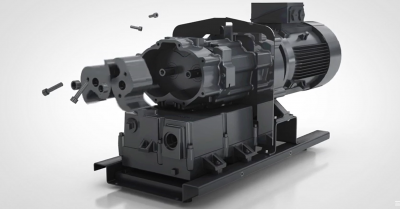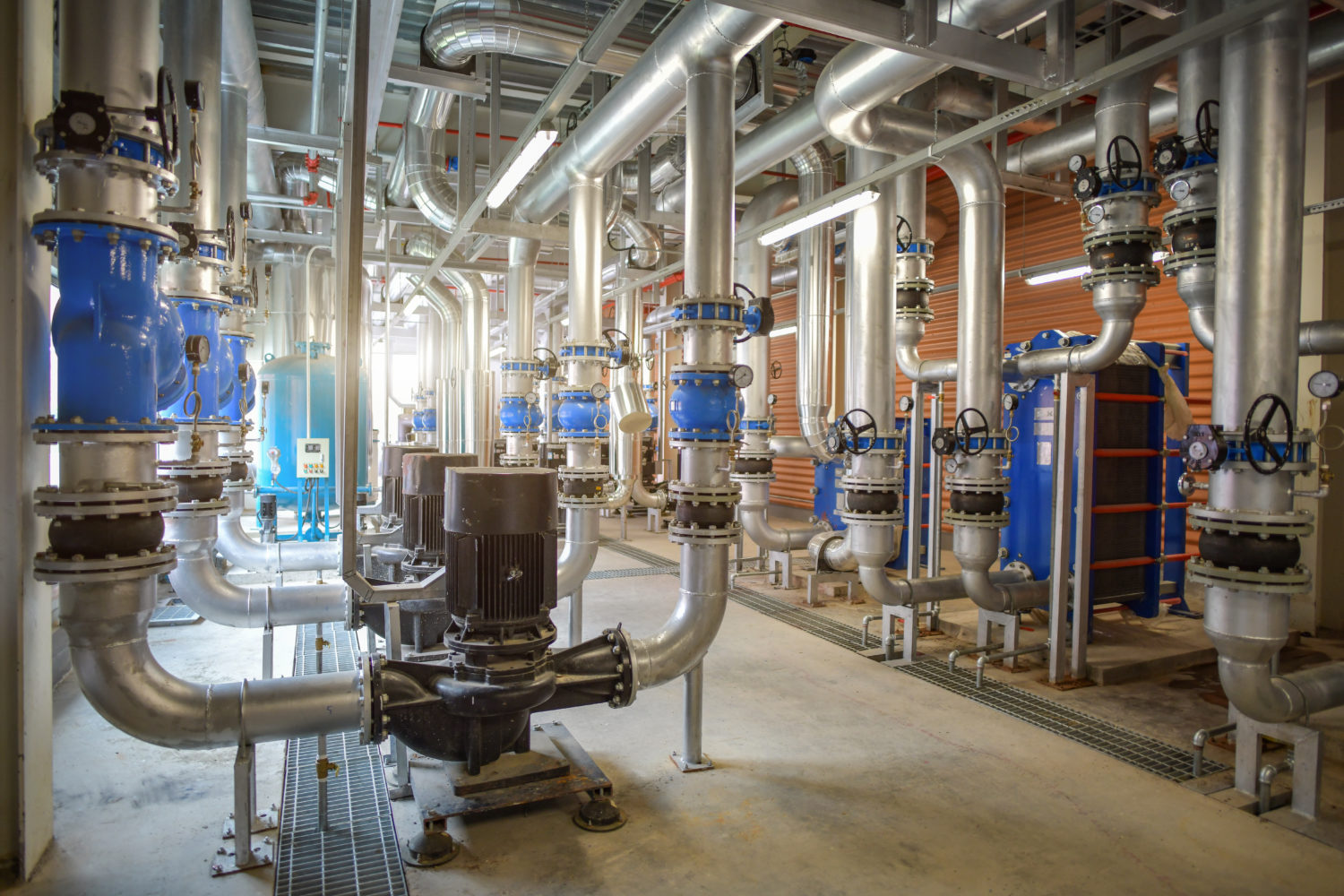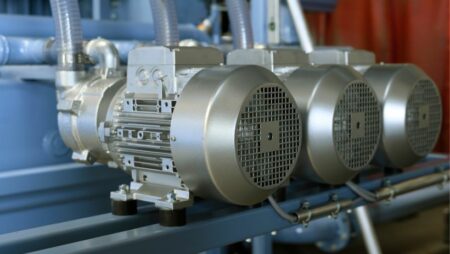Descripción del producto
Customized High Volume Centrifugal Vacuum Pump Specifications
| Modelo | Diseño | Power | Air flow | Pressure | Vacuum | Weight | |
| KW | m3/h | mbar | mbar | Kgs | |||
| TKS-70 | Single | 2.2-7.5 | 120-1200 | 241 | 224 | 66-93 | |
Model: TKS-70 Brand: SCB
Frequency: 50/60Hz Motor: IE2 / IE3
Power: 2.2-7.5kw Voltage: 220V / 380V
Air flow: 120-1200m3/h Pressure: -224 / 241mbar
Packages: Packed in cartons Dimension: 750*650*650mm
Installation ways: vertical and Horizontal Outlet: 360 around
Customized High Volume Centrifugal Vacuum Pump Advantages
★ IE2 and IE3 Motor with High class protection
★ Energy Saving
★ Easy to install
★ High Speed and High Air flow
★ Competitive Price with Good Quality
★ Durable and Long time warrenty
Customized High Volume Centrifugal Vacuum Pump Applications
A. Ultrasonic Washing & Cleaning & Drying Equipment
B. Fridge board drying
C. Dust-Free Plant
D. Auto part Drying
E. Plastic sheet Drying
F. Electroplating parts Drying
G. Plating Drying and Cleaning System
H. PCBA Cleaning and Drying Equipment
I. Material Handling and Conveying
J. Water Treatment
K. Tank Aeration & Aquaculture & Shrimp (Fish) Farm
L. Vacuum Filling Equipment & Bottling drying system
M. Spa Pool & Swimming Pool Equipment & Jacuzzi Spas
N. Air Coating & Spraying System
O. Biogas Transportation & Biogas Power Generation
P. Sand Blasting Machine
Etc.
SCB Vacuum Company service
A. Professional design and die-casting blowers make sure the stable capacity
B. Engineer Teams help you choosing the best suitable models
C. OEM service available
D. Full products range: ring blowers, belt-driven blowers, Atex blowers, IP55 etc
E. 1 year warrenty, 24hours service support
F. Super quality with Competitive Price
G. Delivery time is 1week after payment
H. Certificates: CCC, CE, TUV
Customized High Volume Centrifugal Vacuum Pump Introduction
SCB Vacuum are a company which develop blower for some years. Our main products is belt-driven pump, vacuum blower, vacuum blower, regenerative blower, ring blower, side channel blower and all parts. The full range models will support you much well in the market.
Belt-driven pump are using Die-casting technique, to make sure provide all blowers with stable the capacity and peformance.
The terms we appreciate is FOB, CFR, CIF and EXW etc.
Welcome contact us for more technical information and competitive price!
| SCB | Fanny | |
| SCB Vacuum Tech Limited | ||
| Add: C402, Kaisong Industrial Park, Xihu (West Lake) Dis., Xihu (West Lake) Dis., HangZhou, ZheJiang Province, China | ||
| Web: vacuumblower |
| Servicio postventa: | Yes |
|---|---|
| Garantía: | 1 año |
| Oil or Not: | Oil Free |
| Muestras: |
US$ 1618/Piece
1 Pieza(Pedido Mínimo) | Pedir muestra |
|---|
| Personalización: |
Disponible
|
|
|---|
.shipping-cost-tm .tm-status-off{background: none;padding:0;color: #1470cc}
|
Gastos de envío:
Flete estimado por unidad. |
sobre los gastos de envío y el plazo de entrega estimado. |
|---|
| Forma de pago: |
|
|---|---|
|
Pago inicial Pago completo |
| Moneda: | US$ |
|---|
| Devoluciones: | Puede solicitar el reembolso hasta 30 días después de recibir los productos. |
|---|

What Are the Advantages of Using Oil-Sealed Vacuum Pumps?
Oil-sealed vacuum pumps offer several advantages in various applications. Here’s a detailed explanation:
1. High Vacuum Performance: Oil-sealed vacuum pumps are known for their ability to achieve high levels of vacuum. They can create and maintain deep vacuum levels, making them suitable for applications that require a low-pressure environment. The use of oil as a sealing and lubricating medium helps in achieving efficient vacuum performance.
2. Wide Operating Range: Oil-sealed vacuum pumps have a wide operating range, allowing them to handle a broad spectrum of vacuum levels. They can operate effectively in both low-pressure and high-vacuum conditions, making them versatile for different applications across various industries.
3. Efficient and Reliable Operation: These pumps are known for their reliability and consistent performance. The oil-sealed design provides effective sealing, preventing air leakage and maintaining a stable vacuum level. They are designed to operate continuously for extended periods without significant performance degradation, making them suitable for continuous industrial processes.
4. Contamination Handling: Oil-sealed vacuum pumps are effective in handling certain types of contaminants that may be present in the process gases or air being evacuated. The oil acts as a barrier, trapping and absorbing certain particulates, moisture, and chemical vapors, preventing them from reaching the pump mechanism. This helps protect the pump internals from potential damage and contributes to the longevity of the pump.
5. Thermal Stability: The presence of oil in these pumps helps in dissipating heat generated during operation, contributing to their thermal stability. The oil absorbs and carries away heat, preventing excessive temperature rise within the pump. This thermal stability allows for consistent performance even during prolonged operation and helps protect the pump from overheating.
6. Noise Reduction: Oil-sealed vacuum pumps generally operate at lower noise levels compared to other types of vacuum pumps. The oil acts as a noise-damping medium, reducing the noise generated by the moving parts and the interaction of gases within the pump. This makes them suitable for applications where noise reduction is desired, such as laboratory environments or noise-sensitive industrial settings.
7. Versatility: Oil-sealed vacuum pumps are versatile and can handle a wide range of gases and vapors. They can effectively handle both condensable and non-condensable gases, making them suitable for diverse applications in industries such as chemical processing, pharmaceuticals, food processing, and research laboratories.
8. Cost-Effective: Oil-sealed vacuum pumps are often considered cost-effective options for many applications. They generally have a lower initial cost compared to some other types of high-vacuum pumps. Additionally, the maintenance and operating costs are relatively lower, making them an economical choice for industries that require reliable vacuum performance.
9. Simplicity and Ease of Maintenance: Oil-sealed vacuum pumps are relatively simple in design and easy to maintain. Routine maintenance typically involves monitoring oil levels, changing the oil periodically, and inspecting and replacing worn-out parts as necessary. The simplicity of maintenance procedures contributes to the overall cost-effectiveness and ease of operation.
10. Compatibility with Other Equipment: Oil-sealed vacuum pumps are compatible with various process equipment and systems. They can be easily integrated into existing setups or used in conjunction with other vacuum-related equipment, such as vacuum chambers, distillation systems, or industrial process equipment.
These advantages make oil-sealed vacuum pumps a popular choice in many industries where reliable, high-performance vacuum systems are required. However, it’s important to consider specific application requirements and consult with experts to determine the most suitable type of vacuum pump for a particular use case.

Can Vacuum Pumps Be Used for Leak Detection?
Yes, vacuum pumps can be used for leak detection purposes. Here’s a detailed explanation:
Leak detection is a critical task in various industries, including manufacturing, automotive, aerospace, and HVAC. It involves identifying and locating leaks in a system or component that may result in the loss of fluids, gases, or pressure. Vacuum pumps can play a significant role in leak detection processes by creating a low-pressure environment and facilitating the detection of leaks through various methods.
Here are some ways in which vacuum pumps can be used for leak detection:
1. Vacuum Decay Method: The vacuum decay method is a common technique used for leak detection. It involves creating a vacuum in a sealed system or component using a vacuum pump and monitoring the pressure change over time. If there is a leak present, the pressure will gradually increase due to the ingress of air or gas. By measuring the rate of pressure rise, the location and size of the leak can be estimated. Vacuum pumps are used to evacuate the system and establish the initial vacuum required for the test.
2. Bubble Testing: Bubble testing is a simple and visual method for detecting leaks. In this method, the component or system being tested is pressurized with a gas, and then immersed in a liquid, typically soapy water. If there is a leak, the gas escaping from the component will form bubbles in the liquid, indicating the presence and location of the leak. Vacuum pumps can be used to create a pressure differential that forces gas out of the leak, making it easier to detect the bubbles.
3. Helium Leak Detection: Helium leak detection is a highly sensitive method used to locate extremely small leaks. Helium, being a small atom, can easily penetrate small openings and leaks. In this method, the system or component is pressurized with helium gas, and a vacuum pump is used to evacuate the surrounding area. A helium leak detector is then used to sniff or scan the area for the presence of helium, indicating the location of the leak. Vacuum pumps are essential for creating the low-pressure environment required for this method and ensuring accurate detection.
4. Pressure Change Testing: Vacuum pumps can also be used in pressure change testing for leak detection. This method involves pressurizing a system or component and then isolating it from the pressure source. The pressure is monitored over time, and any significant pressure drop indicates the presence of a leak. Vacuum pumps can be used to evacuate the system after pressurization, returning it to atmospheric pressure for comparison or retesting.
5. Mass Spectrometer Leak Detection: Mass spectrometer leak detection is a highly sensitive and precise method used to identify and quantify leaks. It involves introducing a tracer gas, usually helium, into the system or component being tested. A vacuum pump is used to evacuate the surrounding area, and a mass spectrometer is employed to analyze the gas samples for the presence of the tracer gas. This method allows for accurate detection and quantification of leaks down to very low levels. Vacuum pumps are crucial for creating the necessary vacuum conditions and ensuring reliable results.
In summary, vacuum pumps can be effectively used for leak detection purposes. They facilitate various leak detection methods such as vacuum decay, bubble testing, helium leak detection, pressure change testing, and mass spectrometer leak detection. Vacuum pumps create the required low-pressure environment, assist in evacuating the system or component being tested, and enable accurate and reliable leak detection. The choice of vacuum pump depends on the specific requirements of the leak detection method and the sensitivity needed for the application.

¿Cómo elegir el tamaño adecuado de bomba de vacío para una aplicación específica?
Elegir el tamaño adecuado de bomba de vacío para una aplicación específica implica tener en cuenta varios factores para garantizar un rendimiento y una eficacia óptimos. He aquí una explicación detallada:
1. Nivel de vacío requerido: La primera consideración es el nivel de vacío deseado para su aplicación. Las diferentes aplicaciones tienen diferentes requisitos de nivel de vacío, que van desde bajo vacío a alto vacío o incluso ultra alto vacío. Determine el nivel de vacío específico necesario, como micras de mercurio (mmHg) o pascales (Pa), y elija una bomba de vacío capaz de alcanzar y mantener ese nivel.
2. Velocidad de bombeo: La velocidad de bombeo, también conocida como desplazamiento o caudal, es el volumen de gas que una bomba de vacío puede extraer de un sistema por unidad de tiempo. Suele expresarse en litros por segundo (L/s) o pies cúbicos por minuto (CFM). Tenga en cuenta la velocidad de bombeo necesaria para su aplicación, que depende de factores como el volumen del sistema, la carga de gas y el tiempo de evacuación deseado.
3. Carga y composición del gas: El tipo y la composición del gas o vapor que se bombea desempeñan un papel importante en la selección de la bomba de vacío adecuada. Las distintas bombas tienen diferentes capacidades y compatibilidades con gases específicos. Algunas bombas sólo pueden bombear gases no reactivos, mientras que otras pueden bombear gases o vapores corrosivos. Tenga en cuenta la carga de gas y su posible impacto en el rendimiento de la bomba y los materiales de construcción.
4. Requisitos de la bomba de apoyo: En algunas aplicaciones, una bomba de vacío puede requerir una bomba de respaldo para alcanzar y mantener el nivel de vacío deseado. Una bomba de respaldo proporciona un vacío aproximado, que luego es procesado por la bomba de vacío primaria. Considere si su aplicación requiere una bomba de respaldo y asegúrese de la compatibilidad y el tamaño adecuado entre la bomba primaria y la bomba de respaldo.
5. Fugas del sistema: Evalúe las posibles fugas de su sistema. Si su sistema tiene fugas significativas, es posible que necesite una bomba de vacío con una velocidad de bombeo más alta para compensar la entrada continua de gas. Además, considere el impacto de las fugas en el nivel de vacío requerido y la capacidad de la bomba para mantenerlo.
6. Requisitos de potencia y coste de funcionamiento: Tenga en cuenta los requisitos de potencia de la bomba de vacío y asegúrese de que sus instalaciones pueden proporcionar el suministro eléctrico necesario. Además, evalúe el coste de funcionamiento, incluido el consumo de energía y los requisitos de mantenimiento, para elegir una bomba que se ajuste a su presupuesto y a sus consideraciones operativas.
7. Tamaño y limitaciones de espacio: Tenga en cuenta el tamaño físico de la bomba de vacío y si cabe en el espacio disponible en sus instalaciones. Considere factores como las dimensiones de la bomba, el peso y la necesidad de accesorios o equipos de apoyo adicionales.
8. Recomendaciones del fabricante y asesoramiento de expertos: Consulte las especificaciones, directrices y recomendaciones del fabricante para seleccionar la bomba adecuada para su aplicación específica. Además, busque el asesoramiento de especialistas o ingenieros en bombas de vacío que puedan proporcionarle información basada en su experiencia y conocimientos.
Si tiene en cuenta estos factores y evalúa los requisitos específicos de su aplicación, podrá seleccionar la bomba de vacío del tamaño adecuado que cumpla el nivel de vacío deseado, la velocidad de bombeo, la compatibilidad de gases y otros criterios esenciales. La elección de la bomba de vacío adecuada garantiza un funcionamiento eficaz, un rendimiento óptimo y una larga vida útil para su aplicación.


editor by CX 2023-12-09